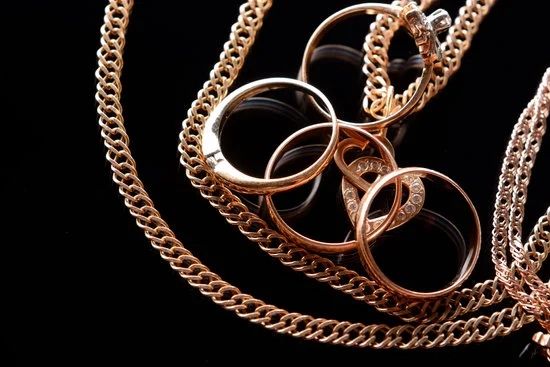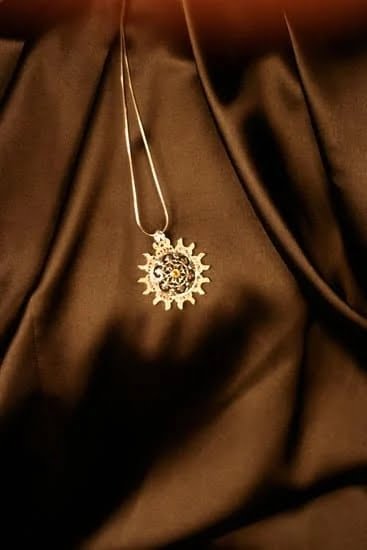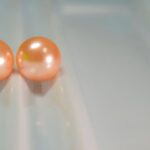Can fishing line be used for jewelry beading? Jewelry making enthusiasts are always on the lookout for alternative materials that can add a unique touch to their creations. Fishing line, known for its strength and versatility, has gained attention as a possible material for jewelry beading. This article delves into the possibilities of using fishing line in jewelry making and explores its strengths, limitations, and creative potential.
When it comes to jewelry beading, traditional materials such as thread, wire, and cord are commonly used. However, more crafters and designers are considering unconventional options like fishing line to add a modern twist to their creations. Understanding the properties of fishing line is essential in determining whether it is suitable for jewelry making.
In this exploration of alternative materials for jewelry beading, we will discuss the pros and cons of using fishing line in jewelry making. From its durability and flexibility to potential challenges in handling, there are various factors to consider when incorporating fishing line into your designs. Join us as we delve into the world of unconventional materials in jewelry making and discover the exciting possibilities that fishing line can offer for creative and innovative designs.
Understanding Fishing Line
Fishing line is a versatile material that can be used in jewelry beading. When it comes to understanding fishing line for jewelry making, it is important to consider its strengths and limitations. One of the primary advantages of using fishing line for jewelry beading is its strength.
Fishing line is designed to withstand the weight and pull of large fish, so it can certainly handle the weight of beads and other components in jewelry making. Additionally, fishing line is available in different thicknesses and strengths, allowing for versatility in creating different types of jewelry.
However, there are also limitations to using fishing line for jewelry beading. One limitation is that fishing line may not be as flexible as traditional beading wires, which can make it challenging to work with when creating intricate or delicate designs. Additionally, some types of fishing line can be prone to kinking or stretching, which may affect the overall look and durability of the finished jewelry piece.
Despite these limitations, with some tips and tricks, fishing line can still be a great choice for jewelry making. For example, using a higher quality and more durable type of fishing line can help mitigate some of the issues associated with flexibility and durability. It’s also important to consider the design and purpose of the jewelry piece when choosing whether or not to use fishing line.
Lastly, to truly understand how fishing line can be used for jewelry beading, it’s important to experiment with different techniques and designs. Incorporating unique knots, braids, or weaving patterns into jewelry designs can showcase the versatility and creativity that fishing line brings to the table when it comes to jewelry making.
| Advantages | Limitations |
|---|---|
| Strength | Flexibility |
| Versatility | Kinking/stretching |
Pros and Cons of Using Fishing Line for Jewelry Beading
Using fishing line for jewelry beading can offer both advantages and disadvantages. One of the major pros of using fishing line is its strength and durability. Fishing line is designed to withstand the weight and struggle of large fish, so it is unlikely to break or fray when used in jewelry making. Additionally, fishing line is transparent and virtually invisible, allowing beads to take center stage in the design without any noticeable thread showing through.
However, there are also limitations to using fishing line for jewelry beading. While it may be strong, fishing line lacks flexibility compared to traditional beading threads such as nylon or silk.
This can make it more challenging to work with when creating intricate designs or when stringing small, delicate beads. Additionally, because fishing line is not specifically designed for jewelry making, it may not hold knots as securely as other threads and may require additional techniques or adhesive to ensure the beads stay in place.
When considering whether to use fishing line for jewelry beading, it is important to weigh these pros and cons based on individual design preferences and project requirements. While some people may find the strength and transparency of fishing line to be ideal for their jewelry designs, others may prefer the flexibility and ease of use offered by traditional beading threads. Experimenting with different materials can help you determine what works best for your specific projects.
Tips and Tricks for Using Fishing Line in Jewelry Beading
When using fishing line for jewelry beading, there are several tips and tricks that can help you achieve the best results. From choosing the right type of fishing line to proper techniques for securing beads, these tips can make a difference in your jewelry-making process.
Choose the Right Fishing Line
Not all fishing lines are created equal when it comes to jewelry making. It’s important to choose a fishing line that is strong enough to hold the weight of the beads, yet still flexible enough to work with. Monofilament fishing line is a popular choice for jewelry beading due to its strength and transparency, which gives the illusion that the beads are floating on the skin.
Secure Knots Properly
One of the challenges of using fishing line for jewelry beading is ensuring that knots are secure and won’t come undone over time. When tying off the ends of your fishing line, consider using multiple knots or adding a dab of clear nail polish to keep them in place.
Use Bead Stoppers
Bead stoppers or bead clamps can be helpful tools when working with fishing line for jewelry beading. These small devices can hold your beads in place, preventing them from sliding off while you’re working on your design.
By following these tips and tricks, you
Creative Design Ideas for Jewelry Making With Fishing Line
Fishing line can be a surprisingly versatile material for jewelry making, offering a unique and innovative look for your designs. Here are some creative design ideas to inspire you to use fishing line in your jewelry beading projects:
- Invisibility effect: Due to its transparent nature, fishing line can create the illusion that beads are floating on the wearer’s skin. This can add an ethereal and delicate touch to necklaces, bracelets, and earrings.
- Mixed media: Combine fishing line with other materials such as metal charms, gemstones, or pearls to create a modern and eclectic style. The contrast between the transparent line and the solid materials adds visual interest to the piece.
- Knotted designs: Experiment with different knotting techniques to create intricate patterns and textures with fishing line. Knots can also be used to secure beads in place without the need for clasps or closures.
These design ideas showcase the unique qualities of fishing line and how it can be used to achieve stunning and unconventional jewelry pieces. By thinking outside the box and embracing the transparent nature of fishing line, you can create one-of-a-kind jewelry that is sure to stand out.
Whether you are a beginner or experienced jewelry maker, incorporating fishing line into your designs opens up a world of possibilities for creating truly extraordinary pieces that capture attention and admiration. With some creativity and experimentation, you can elevate your jewelry making skills by working with this unexpected material.
Comparing Fishing Line to Traditional Beading Materials
Fishing line has become an increasingly popular alternative material for jewelry beading, providing a unique and versatile option for crafters and designers. While traditional beading materials like string, wire, or thread are commonly used, many jewelry makers are turning to fishing line for its strength and flexibility. This section will examine the differences between fishing line and traditional beading materials, highlighting the various advantages and potential drawbacks of using fishing line in jewelry making.
When comparing fishing line to traditional beading materials, one of the main advantages is its durability and strength. Fishing line is designed to withstand the tension and weight of fish, making it a reliable choice for creating sturdy and long-lasting jewelry pieces. Additionally, its transparency gives jewelry a floating effect when beads are strung on it, creating a unique and visually striking result.
On the other hand, traditional beading materials like thread or wire offer more flexibility in terms of color variety and texture. They also tend to hold knots better than fishing line, which can sometimes slip due to its slick texture. However, with proper techniques and tips, this issue can easily be overcome when using fishing line for jewelry beading.
Another important aspect to consider when comparing these materials is their affordability and accessibility. Fishing line is widely available in different thicknesses and strengths at affordable prices from outdoor or sporting goods stores. Conversely, traditional beading materials may require a special trip to a craft store, where they can range in price depending on the type and quality needed. Therefore, fishing line presents itself as a practical option that allows for creativity without breaking the bank.
| Comparing Materials | Advantages | Disadvantages |
|---|---|---|
| Fishing Line | Durability/strength; Transparency; Affordability/accessibility | Slippery texture; Limited color variety; Knot holding capacity |
| Traditional Beading Materials | Color variety; Texture; Knot holding capacity | Lack of strength/durability; Limited accessibility/affordability |
Safety Considerations When Using Fishing Line for Jewelry Beading
When using fishing line for jewelry beading, it is important to consider the safety aspects of this material. While fishing line can be a great alternative for traditional beading materials, there are some precautions that need to be taken to ensure safe and enjoyable jewelry making.
Choosing the Right Fishing Line
When selecting fishing line for jewelry beading, it is crucial to choose a high-quality, durable line that is specifically designed for crafting and not just for fishing. Look for lines that are labeled as “beading thread” or “crafting thread” to ensure that they are safe for use in jewelry making. Avoid using old or worn-out fishing line, as it may not have the strength and stability needed for creating sturdy jewelry pieces.
Avoiding Injuries
One of the main safety considerations when using fishing line for jewelry beading is the risk of injury from sharp ends. The nature of fishing line means that it can have sharp edges when cut, which can pose a risk of cuts and injuries.
It is important to handle the line with care and use appropriate tools such as scissors or wire cutters to avoid any accidents. Additionally, it is recommended to work in a well-lit area and keep the workspace organized to prevent accidentally stepping on or getting tangled in stray pieces of line.
Preventing Strangulation Hazard
Another important safety consideration when using fishing line for jewelry beading is preventing the risk of strangulation. When creating necklaces or bracelets with fishing line, make sure to securely knot and secure the ends to prevent them from coming loose and posing a choking hazard, especially if children may come into contact with the finished jewelry pieces.
By being mindful of these safety considerations when using fishing line for jewelry beading, crafters can enjoy creating unique and beautiful pieces while minimizing potential risks and hazards associated with this alternative material.
Conclusion
In conclusion, the use of fishing line for jewelry beading opens up a world of possibilities for unique and innovative designs. As explored in this article, fishing line offers strengths such as durability and flexibility, making it an ideal material for creating intricate and delicate jewelry pieces.
While it may have limitations compared to traditional beading materials, such as limited color options and potential for tangling, the pros of using fishing line outweigh the cons when approached with creativity and skill.
With the right tips and tricks, jewelry makers can successfully use fishing line for beading by employing techniques like knotting, weaving, and incorporating other materials such as beads and charms. These creative design ideas can result in stunning pieces that stand out from traditional beaded jewelry. Whether it’s creating a floating illusion necklace or a delicate bracelet with minimalistic appeal, fishing line provides endless opportunities for crafting unique and innovative jewelry designs.
In essence, while traditional beading materials have their place in jewelry making, the use of fishing line brings a fresh perspective to the craft. By considering safety precautions when using fishing line for jewelry beading and experimenting with different techniques, jewelry makers can push the boundaries of design and create breathtaking pieces that capture attention. The possibilities are truly endless when it comes to utilizing fishing line in jewelry making.
Frequently Asked Questions
Can You Use Fishing Line for Beading?
Yes, you can use fishing line for beading. In fact, many jewelry makers use monofilament fishing line for its strength and durability when creating beaded jewelry.
Can I Make Bracelets With Fishing Line?
Making bracelets with fishing line is possible and can result in a strong and durable piece of jewelry. It’s important to use the right type of beads and to tie secure knots to ensure the bracelet holds up over time.
How Do You Tie a Fishing Line for Beading?
Tying a fishing line for beading involves using secure knots that will keep the beads in place while also being strong enough to withstand regular wear. Popular knots for beading include the surgeon’s knot and the square knot.

Welcome to my jewelry blog! My name is Sarah and I am the owner of this blog.
I love making jewelry and sharing my creations with others.
So whether you’re someone who loves wearing jewelry yourself or simply enjoys learning about it, be sure to check out my blog for insightful posts on everything related to this exciting topic!





